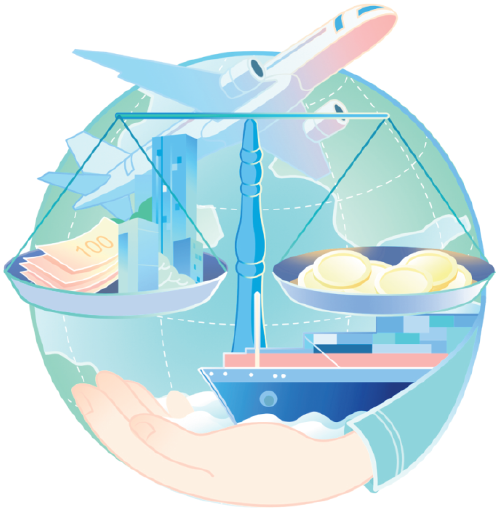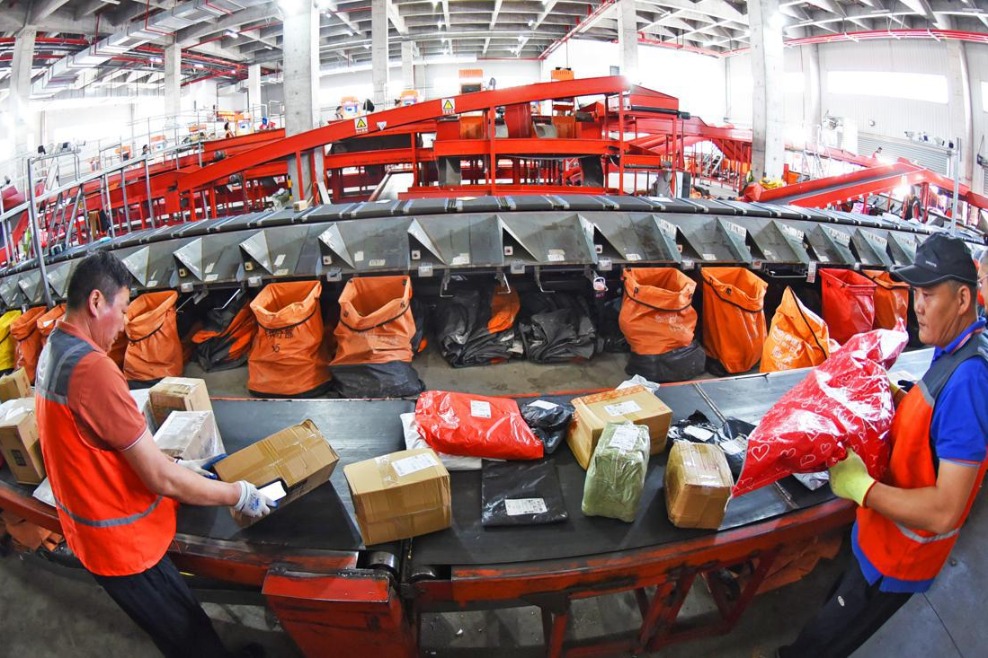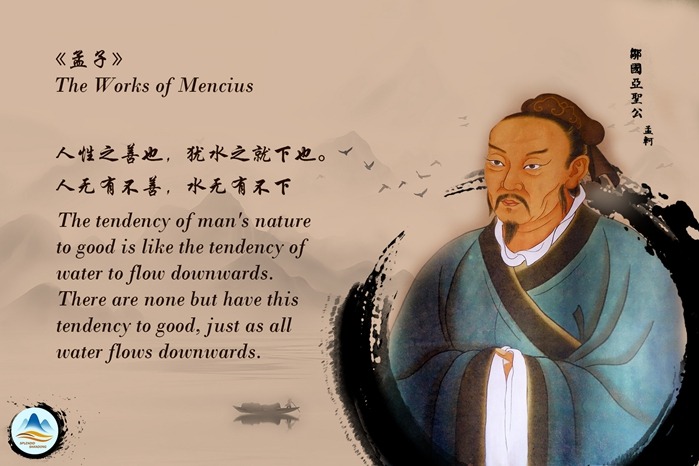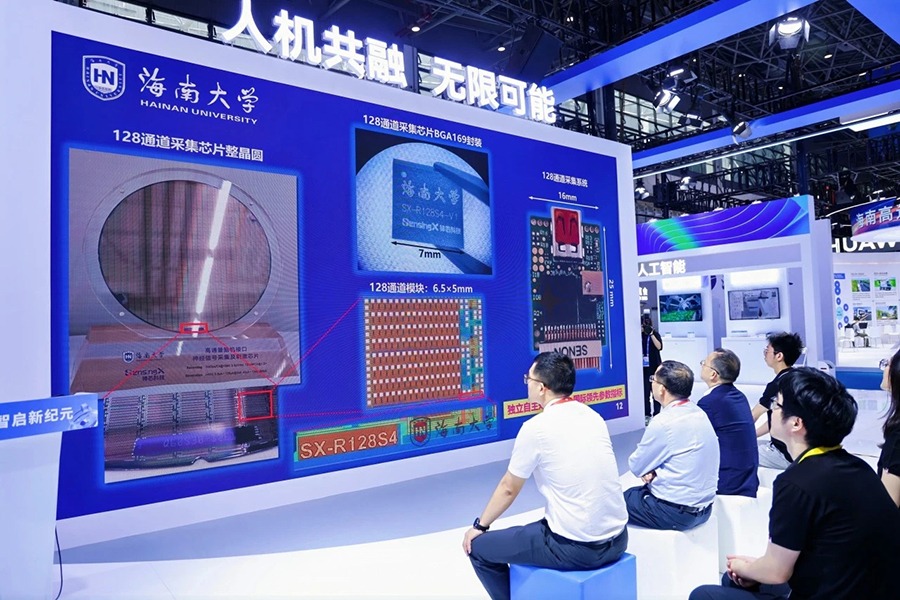Why national categorizations still matter


By embracing concepts such as 'Global South', China shows solidarity with other developing nations, while offering an alternative to Western-led development paradigms
Due to the complexities of a rapidly changing world, traditional concepts for categorizing nations — such as the binary distinction between "developed vs developing" or "North vs South" countries — are coming under growing scrutiny.
These categorizations, once widely applied for their simplicity and utility in policy discussions, are now being challenged by the complex and often contradictory realities of global development. The rise of influential emerging economies such as China, India and Brazil has added to this debate. China, despite not always fitting neatly into the "developed" category on per capita criteria, is wielding significant political and economic influence on the world stage, demonstrating high levels of innovation, infrastructure development and geopolitical clout that rival or even surpass some developed nations. Meanwhile, many countries that have long been labeled developed are grappling with internal challenges such as economic stagnation, political and economic polarization and social unrest.
In addition, in recent years, "Global South" has gained widespread use as a term in academic, political and policy discourses as a way to refer to countries that share experiences of colonization, economic marginalization and systemic inequality within the international order. It serves as a valuable shorthand for highlighting the shared historical legacy of colonialism and imperialism as well as the persistent disparities between affluent, developed nations and those that have long been excluded from global wealth and power. Nevertheless, the concept of the Global South is increasingly debated for being overly broad and analytically imprecise.
Are these dichotomized notions — "developed vs developing", "North vs South" or the inclusive notion of "Global South" — outdated? The answer is absolutely no. They continue to reflect the enduring and deepening inequalities in the world economic order. According to an International Monetary Fund report, global disparities today are the same as they were in the early 20th century. "The poorest half of the global population owns just 2,900 euros ($3,312 in purchasing power parity) per adult, while the top 10 percent owns roughly 190 times as much. Income inequalities are not much better. The richest 10 percent today snap up 52 percent of all income. The poorest half get just 8.5 percent." Therefore, these dichotomized notions are not just historical or ideological relics — they are analytical tools that continue to describe real, persistent global imbalances in wealth, power and opportunity.
Therefore, the basic global inequality condition has not fundamentally changed despite the rise of China and a few emerging economies. So the above terms are still valid. To argue that terms such as "developed", "developing", "Global South" and "North vs South" continue to hold analytical and political relevance, it is essential to examine the historical evolution of these classifications and the enduring patterns of hierarchy in the world economic system.
Late US sociologist Immanuel Wallerstein, known for having developed world-systems analysis, sees the modern world economy as a unified system in which nations are interconnected through production, supply, trade, investment and financial flows. In other words, the world economy is identified as a single, integrated unit rather than as a collection of separate entities.
The current interconnected world economy is largely a product of European imperial expansion beginning in the 16th century, driven by the slave trade, colonization, "free trade" and the world wars. This process forcibly merged diverse sociocultural systems into a single, integrated economic structure. Within this unified system, a global division of labor emerged, enabling the constant movement of commodities, labor, production and capital across regions through complex chains of manufacturing, trade and investment. Africa, much of Asia and Latin America were incorporated much earlier into this world economy primarily through colonization. Following China's economic reforms in the late 1970s, the country was viewed as one of the last major regions to be fully integrated into the world economic system.
Our contemporary world order is composed of sovereign states with diverse political and cultural systems. Yet, despite these sociopolitical and sociocultural differences, they are embedded within a single world economy stratified around a differentiated and specialized division of labor and economic interdependence.
Due to the division of labor in the world economy, stratifications of core, semi-peripheral and peripheral relations continue to exist in perpetuity. In essence, a country's position in global supply chains and value chains is shaped by its proportional role in the structural hierarchy of the world's economic zones — core, semi-peripheral and peripheral — implying that countries have quite different development stages within an interconnected global economy.
Historically, shifts in global production and capital from declining to more profitable sectors have often led to the relocation of less competitive industries to semi-peripheral or peripheral countries, based on factors such as labor cost, skill level and technological capacity. These moments of restructuring create opportunities for "upward mobility" within the world economy, allowing nations to potentially improve their position within its structural hierarchy. However, capitalizing on such opportunities is a complex and challenging process. As a result, the dynamics of the world economy are characterized by continual shifts in the international division of labor and unceasing transformations in patterns of competition and national competitiveness.
China represents one of the most successful cases of a country upgrading its position within the world economy by seizing the opportunities created by globalization, particularly the internationalization of production and investment. Fueled by market reforms and rapid industrialization, China transitioned into a semi-peripheral status during the 1980s and 1990s, a process accelerated by its accession to the World Trade Organization in 2001. In the past decade, China has increasingly exhibited core-like characteristics, including technological innovation, dominance in global manufacturing and exports, and increasing geopolitical influence through initiatives such as the Belt and Road Initiative. As China occupies greater space in the core zone of the world economy, it intensifies competition within a space historically dominated by Western powers.
China identifies itself as a developing country, situating itself within the Global South and pursuing a path to modernization suited to its own national conditions.
Drawing from its own development experience, China has carved out a path that challenges conventional Western modernization theories. By situating itself in the Global South, China is better positioned to share its experiences and development insights with other countries facing similar challenges. Chinese initiatives such as the BRI are not framed as traditional "aid programs", but rather as "cooperation by invitation" — a form of win-win partnership offered by a fellow developing country that has achieved notable success and seeks to collaborate with others in the Global South.
Therefore, China continues to view stratified terms such as "developed vs developing", "North vs South" and "Global South" as valid and relevant frameworks. These classifications not only reflect persistent global inequalities, but also align with China's strategic self-identification as a successful developing country that has charted a distinct path to modernization. By embracing these distinctions, China reinforces its solidarity with other developing nations and strengthens its role as a source of inspiration within the Global South, offering an alternative to Western-led development paradigms.
The author is a Yunshan leading scholar and director of the European Research Center at Guangdong University of Foreign Studies and an adjunct professor of international relations at Aalborg University, Denmark. The author contributed this article to China Watch, a think tank powered by China Daily.
The views do not necessarily reflect those of China Daily.
Contact the editor at editor@chinawatch.cn.


































